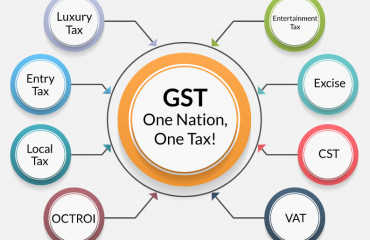
The GST Council has approved introduction of ‘E-invoicing’ or ‘electronic invoicing’ in a phased manner for reporting of business to business (B2B) invoices to GST System.
1. Introduction
1.1 Background
The GST Council has approved introduction of 'E-invoicing' or 'electronic invoicing' in a phased manner for reporting of business to business (B2B) invoices to GST System.
Since there was no standard for e-invoice existing in the country, standard for the same has been finalized after consultation with trade/industry bodies as well as ICAI after keeping the draft in public place. Having a standard is a must to ensure complete inter-operability of e-invoices across the entire GST eco-system so that e-invoices generated by one software can be read by any other software, thereby eliminating the need of fresh data entry – which is a norm and standard expectation today. The machine readability and uniform interpretation is the key objective. This is also important for reporting the details to GST System as part of Return. Apart from the GST System, adoption of a standard will also ensure that an e-invoice shared by a seller with his buyer or bank or agent or any other player in the whole business eco-system can be read by machines and obviate and hence eliminate data entry errors.
The GST Council approved the standard of e-invoice in its 37th meeting held on 20th Sept 2019 and the same along with schema has been published on GST portal. Standards are generally abstruse and thus an explanation document is required to present the same in common man's language. Also, there are lot of myth or misconception about e-Invoice. The present document is an attempt to explain the concept of e-invoice, how it operates and basics of standards.
E-invoicing in India will be a big move, due to the volume of business transactions undertaken every day, as well as the plethora of different, non-standardised formats used in invoice generation. The main objective is to enable interoperability across the entire GST eco-system i.e. an e-invoice generated by one software should be capable of being read by any other software. Basically, through machine readability, an invoice can be uniformly-interpreted.
In addition to the above, this new system of e-invoicing aims to make invoice reporting an integral part of a business process and remove the tedious task of invoice-compilation at the end of a return period. Claiming fictitious Input Tax Credit (ITC) by raising fake invoices is also one of the biggest challenges currently faced by tax authorities.
The e-invoice system will help to curb the actions of unscrupulous taxpayers and reduce the number of fraud cases as the tax authorities will have access to data in real-time. The basic aim behind adoption of e-invoice system by tax departments is ability to pre-populate the return and to reduce the reconciliation problems.
1.2 Purpose and Intended Audience
This document aims to explain the operational procedure on how to use offline and online tool to generate the e-invoices.This document is intended for registered taxpayers under GST, who are the main stakeholders of e-invoice system under GST.
The present document is an attempt to explain the concept of e-invoice, how it operates and basics of standards. It is expected that the document will be useful for the taxpayers, tax consultants and the software companies to adopt the designed standard.
